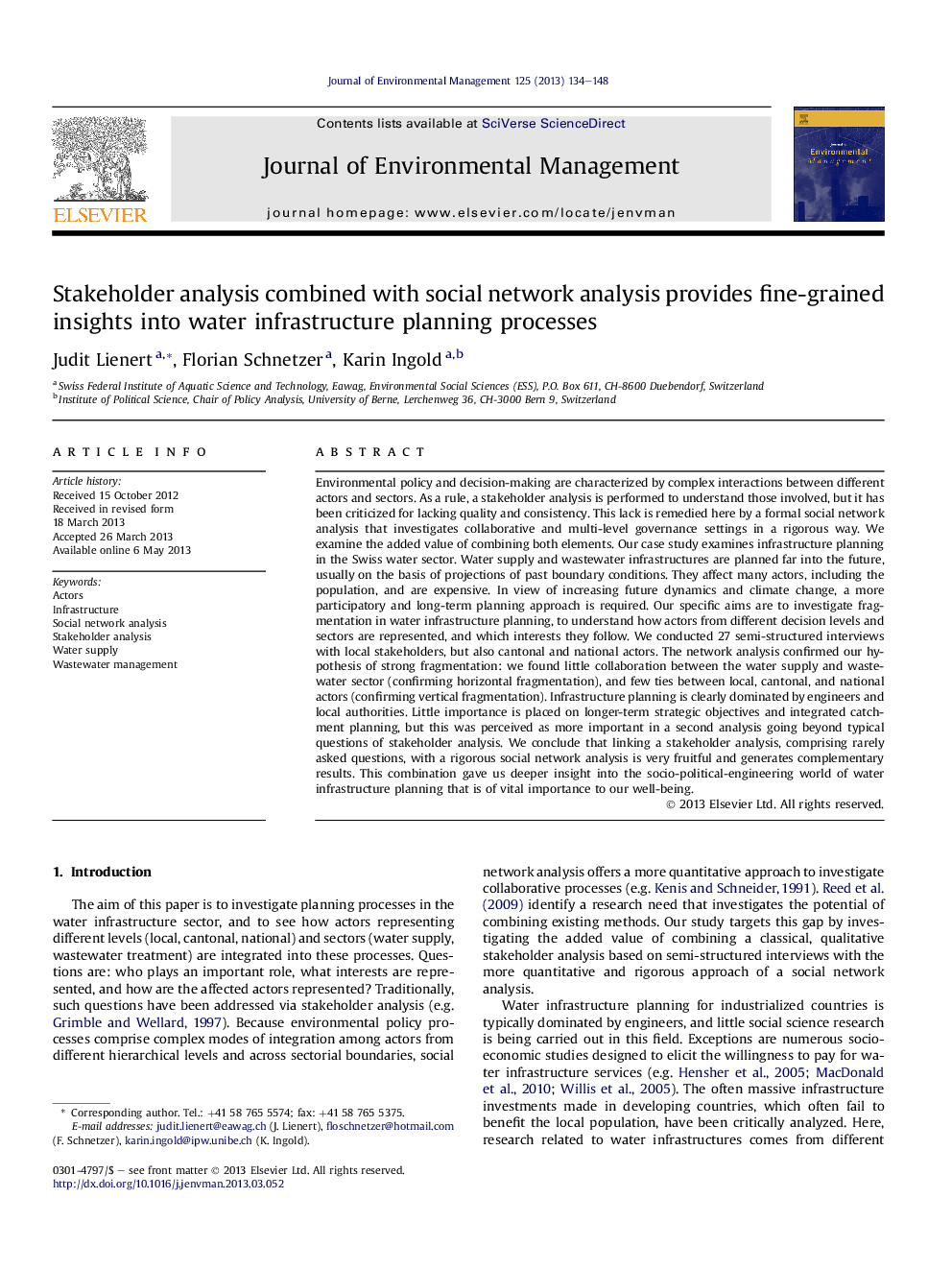| کد مقاله | کد نشریه | سال انتشار | مقاله انگلیسی | نسخه تمام متن |
|---|---|---|---|---|
| 1055895 | 1485287 | 2013 | 15 صفحه PDF | دانلود رایگان |

• Stakeholder analysis combined with social network analysis gives fruitful results.
• Study field was natural resource management, and the water sector in particular.
• Water infrastructure planning is fragmented across sectors and decisional levels.
• Planning is dominated by local actors and engineers with shorter-term objectives.
• Better collaboration is needed for sustainable, integrated catchment planning.
Environmental policy and decision-making are characterized by complex interactions between different actors and sectors. As a rule, a stakeholder analysis is performed to understand those involved, but it has been criticized for lacking quality and consistency. This lack is remedied here by a formal social network analysis that investigates collaborative and multi-level governance settings in a rigorous way. We examine the added value of combining both elements. Our case study examines infrastructure planning in the Swiss water sector. Water supply and wastewater infrastructures are planned far into the future, usually on the basis of projections of past boundary conditions. They affect many actors, including the population, and are expensive. In view of increasing future dynamics and climate change, a more participatory and long-term planning approach is required. Our specific aims are to investigate fragmentation in water infrastructure planning, to understand how actors from different decision levels and sectors are represented, and which interests they follow. We conducted 27 semi-structured interviews with local stakeholders, but also cantonal and national actors. The network analysis confirmed our hypothesis of strong fragmentation: we found little collaboration between the water supply and wastewater sector (confirming horizontal fragmentation), and few ties between local, cantonal, and national actors (confirming vertical fragmentation). Infrastructure planning is clearly dominated by engineers and local authorities. Little importance is placed on longer-term strategic objectives and integrated catchment planning, but this was perceived as more important in a second analysis going beyond typical questions of stakeholder analysis. We conclude that linking a stakeholder analysis, comprising rarely asked questions, with a rigorous social network analysis is very fruitful and generates complementary results. This combination gave us deeper insight into the socio-political-engineering world of water infrastructure planning that is of vital importance to our well-being.
Figure optionsDownload as PowerPoint slide
Journal: Journal of Environmental Management - Volume 125, 15 August 2013, Pages 134–148